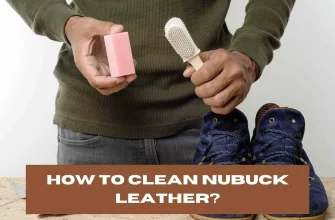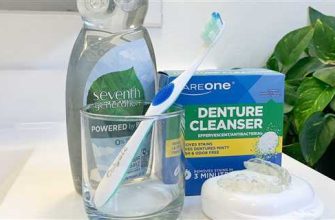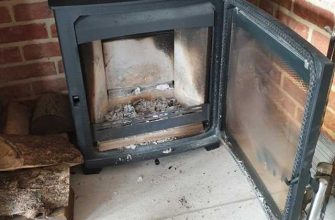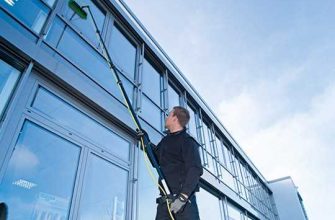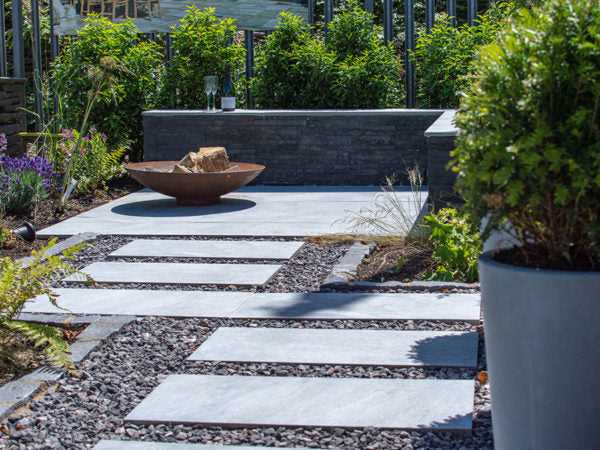
Porcelain paving is a popular choice for outdoor spaces due to its durability and low maintenance. However, to keep your porcelain slabs in beautiful condition, it is important to follow some essential care tips. In this article, we will explore ways to clean and maintain your porcelain paving, what types of products to use, and how to protect your slabs from damage.
When it comes to cleaning your porcelain slabs, a sponge and water are often sufficient for day-to-day maintenance. Simply rid the surface of any dirt or debris with a damp sponge. However, if you notice stubborn stains or areas that require a deeper clean, there are other instructions to bear in mind. Avoid using abrasive cleaners or scouring pads, as these can damage the surface of your slabs. Instead, opt for a gentle cleaning solution and a soft cloth.
Proper installation is also key to maintaining your porcelain paving. Ensure that the substrate is sufficiently prepared, and that the slabs are evenly laid with the recommended jointing compound. This will help to prevent weeds from growing between the slabs and keep the overall appearance of your paved area clean and even. If you notice any loose or unstable slabs, be sure to fix them as soon as possible to avoid further damage.
To protect your porcelain slabs from the elements, it is recommended to seal them. There are various types of sealants available, such as a penetrating seal or a surface seal. These products can help to prevent staining and keep your slabs looking new for longer. Additionally, sealing the slabs will make them easier to clean in the future, as dirt and grime will not be able to penetrate the surface as easily.
When it comes to removing leaves and debris from your porcelain paving, a simple sweeping or blowing with a leaf blower is often sufficient. However, if you have larger areas or heavier debris, a power-washer can be used. Be cautious when using a power-washer, as excessive pressure or using the wrong nozzle can damage the slabs. Always start with a low pressure setting and test it on an inconspicuous area first.
By following these essential tips for porcelain paving care, you can keep your outdoor space looking beautiful and ensure that your slabs last for years to come. Remember to clean spills and stains as soon as possible, maintain the jointing compound, and protect your slabs from the elements. With regular care and maintenance, your porcelain paving will stay in top condition and continue to enhance the beauty of your outdoor area.
- Porcelain Paving Care: Essential Tips for Long-Term Maintenance
- 1. Clean Regularly
- 2. Spot Clean Spills
- 3. Use a Hand Sprayer for Applying Cleaners
- 4. Avoid Dropping Heavy Objects
- 5. Protect Against Stains
- 6. Remove Stains with Care
- 7. Store Outdoor Furniture Properly
- 8. Address Seasonal Maintenance
- FAQ’s
- Regular Cleaning Methods for Outdoor Porcelain Tiles
- 1. Sweep or Vacuum
- 2. Wash with Water
- 3. Apply Cleaning Solution
- 4. Use Mild Cleaners
- 5. Consider Power Washing
- 6. Remove Algae and Moss
- 7. Prevent Stains
- 8. Consider Grout Care
- 9. Apply Sealant
- 10. Know When to Seek Professional Help
- Preventing Staining and Discoloration of Porcelain Paving
- Cleaning and Maintenance
- Tips for Newly Installed Pavers
- Removing Tough Stains and Grease from Porcelain Tiles
- 1. Preparing for Stain Removal
- 2. Choosing the Right Product
- 3. Applying the Stain Remover
- 4. Jetwashing
- 5. Additional Tips and Tricks
- Protecting Outdoor Porcelain Tiles from Harsh Weather Conditions
- Installation
- Composition
- Cleaning
- Seal and Protect
- Avoid Standing Water
- Protect from Heavy Impact
- Keep Surfaces Clean
- Treatment for Algae or Moss
- Spot Cleaning
- Regular Maintenance
- Maintaining the Luster and Shine of Porcelain Paving
- 1. Regular Cleaning
- 2. Stain Removal
- 3. Jointing Compound
- 4. Sealing
- 5. Heavy Duty Cleaning
- 6. General Maintenance
- Video:
- Start To Finish On How To Lay A Porcelain Patio The Right Way
Porcelain Paving Care: Essential Tips for Long-Term Maintenance
Porcelain paving is a beautiful and durable option for outdoor spaces. However, like any other type of paving, it requires proper care to ensure its longevity and aesthetic appeal. Here are some essential tips for maintaining and caring for your porcelain paving:
1. Clean Regularly
Regular cleaning is key to preserving the beauty of your porcelain paving. Sweep or use a leaf blower to remove any loose dirt and debris from the surface. For more stubborn stains or algae growth, use warm water and a mild detergent. Avoid harsh cleaners as they can damage the surface of the paving.
2. Spot Clean Spills
If you accidentally spill something on your porcelain paving, it’s important to clean it up quickly. Use a mild detergent and warm water to gently scrub the affected area. For oil-based stains, you can use a degreaser or a poultice made from baking soda and water to absorb the oil before rinsing.
3. Use a Hand Sprayer for Applying Cleaners
When applying cleaners or detergents to your porcelain paving, use a hand sprayer for even distribution. This will ensure that the cleaning solution is evenly spread and thoroughly cleans the surface.
4. Avoid Dropping Heavy Objects
Porcelain paving is hard and durable, but it can still be damaged by heavy objects. Avoid dropping heavy items like tools or furniture directly onto the paving to prevent cracks or chips.
5. Protect Against Stains
Sealing your porcelain paving can help protect it against stains and make it easier to clean. Apply a suitable sealer following the manufacturer’s instructions to maintain the color and appearance of the paving.
6. Remove Stains with Care
If you notice any stains on your porcelain paving, avoid using abrasive cleaners or tools that can scratch the surface. Instead, try using a non-abrasive cleaner and a soft brush to gently scrub away the stain.
7. Store Outdoor Furniture Properly
During the winter or when not in use, properly store your outdoor furniture to prevent any damage to your porcelain paving. Place furniture on protective pads or cover them to avoid scratching or staining the paving.
8. Address Seasonal Maintenance
As the seasons change, it’s important to address any maintenance needs that arise. For example, remove any leaves or debris that may accumulate on the paving to prevent staining or moisture buildup.
FAQ’s
- Q: How do I remove difficult stains from porcelain paving?
- A: For difficult stains, you can try using a specialized porcelain cleaner or contacting a professional cleaning service for assistance.
- Q: Can cars park on porcelain paving?
- A: Yes, cars can park on porcelain paving. However, it is important to distribute the weight evenly to prevent cracking or damage.
- Q: How do I remove algae from porcelain paving?
- A: To remove algae, you can use a mixture of warm water and mild detergent. Scrub the affected area gently and rinse thoroughly.
By following these essential tips for porcelain paving care, you can keep your outdoor spaces looking beautiful and ensure the longevity of your paving installation.
Regular Cleaning Methods for Outdoor Porcelain Tiles
When it comes to keeping your outdoor porcelain tiles in good condition, regular cleaning is essential. By following these simple steps, you can maintain the appearance and lifespan of your tiles for years to come.
1. Sweep or Vacuum
Start by sweeping or vacuuming the tiles to remove any loose dirt, leaves, or debris. This simple step can prevent dirt from grinding into the tiles and causing stains or scratches.
2. Wash with Water
Use a hose or pressure washer to wash the tiles with water. This helps to remove any remaining dirt and provides a fresh start for the next cleaning steps.
3. Apply Cleaning Solution

If there are any stubborn stains or spots on the tiles, you can apply a gentle cleaning solution. Follow the manufacturer’s instructions for dilution and use a soft brush or mop to scrub the affected areas.
4. Use Mild Cleaners
For general cleaning, mild household cleaners or soap can be used. Avoid harsh chemicals or abrasive cleaners, as they can damage the porcelain surface.
5. Consider Power Washing
A power washer can be effective for deep cleaning outdoor porcelain tiles, especially when dealing with heavy dirt or stains. However, exercise caution and follow the manufacturer’s instructions to prevent damage.
6. Remove Algae and Moss
If your tiles have become slippery or discolored due to algae or moss growth, use a specialized algae remover. Follow the instructions carefully, as some products may require dilution or multiple applications.
7. Prevent Stains
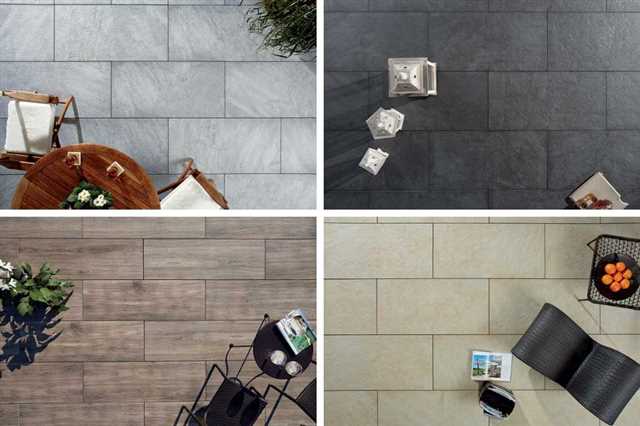
To prevent staining, it’s important to clean up spills promptly. Oil, grease, or other liquids should be removed as soon as possible using appropriate cleaners.
8. Consider Grout Care
If your outdoor porcelain tiles have grout, it’s important to keep it clean as well. Use a short-haired brush or water and a mild detergent to prevent grout from becoming dirty or discolored.
9. Apply Sealant
Consider applying a sealant to your outdoor porcelain tiles. This can help protect the tiles from moisture, stains, and general wear and tear. Follow the manufacturer’s instructions for application.
10. Know When to Seek Professional Help
If your outdoor porcelain tiles are heavily stained, damaged, or in poor condition, it may be time to seek professional guidance. A professional cleaning or restoration service can help bring your tiles back to their original condition.
By following these regular cleaning methods, you can keep your outdoor porcelain tiles looking their best and ensure their longevity. Remember to always consult the manufacturer’s instructions and use appropriate cleaning products for the best results.
Preventing Staining and Discoloration of Porcelain Paving
When it comes to maintaining the beauty and longevity of your porcelain paving, it’s important to take steps to prevent staining and discoloration. Here are some essential tips to help keep your porcelain paving looking its best:
- Know what you’re dealing with: Before you begin any care routine, it’s important to know the type of porcelain paving you have. Different types may require different cleaning and maintenance methods.
- Browse the manufacturer’s guidelines: Manufacturers often provide specific care instructions for their porcelain paving. Be sure to check their website or product packaging for any recommendations or restrictions.
- Types of stains: There are different types of stains that can occur on porcelain paving, such as oil, rust, or organic stains. It’s important to identify the type of stain to select the appropriate cleaning method.
- Textured porcelain paving: Textured porcelain paving can be more prone to staining and discoloration as dirt and grime can become lodged in the textured surface. Regular cleaning and sealing can help prevent this.
- Release agents: If your porcelain paving was previously installed and grouted, it may have been treated with release agents. These agents can leave residue on the surface, resulting in discoloration. Follow the manufacturer’s instructions to remove any residue before applying a sealer.
- Frequently asked questions (FAQs): Manufacturers often have FAQs on their website that address common issues with porcelain paving care. Checking these FAQs can provide helpful tips and solutions.
Cleaning and Maintenance
Here are some quick tips for cleaning and maintaining your porcelain paving:
- Make use of a sprayer: Using a sprayer can make the cleaning process easier and more efficient. Dilute the cleaning solution as directed by the manufacturer and apply it evenly to the surface of the paving.
- Use a resilient brush: For tough stains, consider using a brush with stiff bristles to scrub the area. Be cautious not to use a brush that is too abrasive and may damage the surface of the porcelain tiles.
- Consider using a sealer: Applying a sealer to your porcelain paving can enhance its stain resistance. Follow the manufacturer’s instructions for applying the sealer and choose a product specifically designed for outdoor use.
- Wash off stains immediately: It’s important to wash off any stains as soon as possible to prevent them from setting into the paving. Use a mild detergent and a soft cloth to gently clean the stained area.
- Removing oil and grease stains: For oil and grease stains, use a suitable remover, such as a degreaser or an oil stain remover. Apply the remover as directed by the manufacturer and thoroughly rinse the area after.
- Grouting residue: If grouting has been recently done, it’s important to remove any grout residue from the surface of the paving. Do this as soon as possible using a suitable grout haze remover and follow the manufacturer’s instructions.
Tips for Newly Installed Pavers
If you’ve recently installed porcelain pavers, here are some additional tips to consider:
- Helpful during installation: During the installation process, it’s important to keep the porcelain paving clean. Avoid using colored cement or adhesive that may stain the tiles.
- Diluted sealant: Applying a diluted sealant before grouting can help protect the porcelain tiles from grout staining. Follow the manufacturer’s instructions for mixing and applying the sealant.
- Seal after grouting: Once the grouting is complete and fully dried, apply a suitable sealer to the porcelain pavers. This will provide an additional layer of protection against staining and discoloration.
- Be cautious during grouting: When grouting, be careful to avoid getting any grout on the surface of the porcelain tiles. If any grout does come into contact with the tiles, remove it immediately using a suitable grout remover.
- Collated grouting: For large areas of porcelain paving, consider collated grouting. This involves using a grout floating technique that reduces the risk of grout staining the tiles.
By following these tips and guidelines, you can help prevent staining and discoloration of your porcelain paving, allowing it to maintain its beauty and slip-resistant properties for years to come.
Removing Tough Stains and Grease from Porcelain Tiles
If you have porcelain tiles in your home, you may sometimes find yourself dealing with tough stains and grease that are not easily removed with regular cleaning methods. Here are some tips and tricks to help you remove these stubborn stains and keep your porcelain tiles looking their best.
1. Preparing for Stain Removal
Before applying any stain-removing product, it is important to thoroughly clean the stained area with a sponge and warm water. This will remove any surface dirt or debris and allow the treatment to penetrate the stain more effectively.
2. Choosing the Right Product
There are various stain-removing products available on the market specifically designed for porcelain tiles. Before using any product, always check the manufacturer’s packaging for instructions and make sure it is suitable for porcelain tiles. Some cleaners are specifically formulated to remove grease stains, while others are more suitable for removing general stains.
3. Applying the Stain Remover
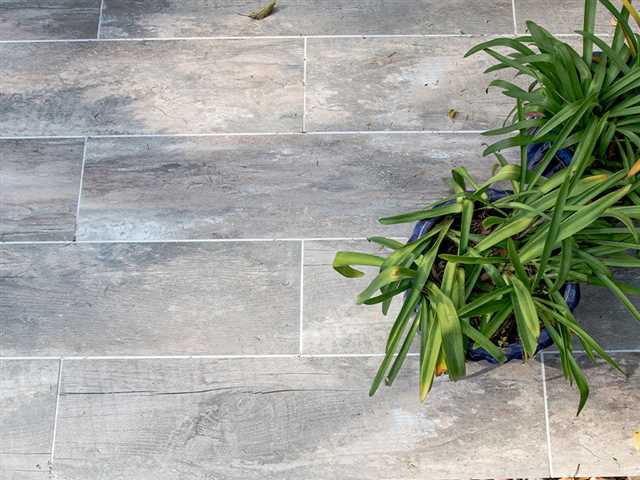
When applying the stain remover, follow the instructions on the packaging carefully. In most cases, you will need to apply the product to the stained area and let it sit for a specific amount of time to allow it to work. Use a stiff-bristled brush or sponge to gently scrub the stain after the recommended waiting period. Be sure to wear gloves and a mask to protect yourself from any fumes or chemicals.
4. Jetwashing
If the stains are particularly stubborn, you can try using a jetwash or power sprayer. These powerful tools can help to remove tough stains and grease from the surface of the porcelain tiles. Be sure to follow the manufacturer’s instructions and avoid using too much pressure, as this can damage the tiles.
5. Additional Tips and Tricks
- If you have recently installed porcelain tiles, it is important to remove any adhesive or grout residue before applying any stain-removing products.
- For general maintenance and care, regularly sweep or vacuum the porcelain tiles to remove any dirt or debris. This will help prevent stains from forming in the first place.
- If the stain is not completely removed after following these steps, you may need to repeat the treatment or try a different product.
- For external surfaces, such as porcelain paving, be aware that algae and moss can cause stains. Regular sweeping and washing with warm water and a mild detergent can help prevent these stains from forming.
By following these tips and tricks, you can effectively remove tough stains and grease from your porcelain tiles and keep them looking clean and beautiful. Remember to always test any stain-removing product on an inconspicuous area first to ensure it does not damage or discolor the tiles.
Protecting Outdoor Porcelain Tiles from Harsh Weather Conditions
Porcelain tiles are a popular choice for outdoor paving due to their durability and low maintenance. However, it is important to take proper care of them, especially during harsh weather conditions, to ensure their longevity and beauty.
Installation
Proper installation is crucial to protect porcelain tiles from weather damage. Ensure that the tiles are installed by following the manufacturer’s instructions and using a porcelain-friendly adhesive. This will help to create a strong bond between the tiles and the surface, making them more resistant to weather-related stresses.
Composition
Porcelain tiles are composed of natural materials and are fired at high temperatures. This makes them highly resistant to water absorption, fading, and frost. However, they are not completely impervious to damage. Extreme temperature changes and prolonged exposure to harsh weather conditions can still affect their appearance and performance.
Cleaning
Cleaning your outdoor porcelain tiles regularly is essential to protect them from stains and dirt buildup. Use a mild detergent and warm water to clean the tiles. Avoid using abrasive cleaners or tools that can scratch the surface. Rinse the tiles thoroughly after cleaning to remove any residues.
Seal and Protect
Applying a sealant to your porcelain tiles can provide an additional layer of protection against harsh weather conditions. There are different types of sealants available, so choose the one that is suitable for your project and follow the instructions for application. Sealants can help to prevent water penetration and stains on the tiles, keeping them looking fresh and beautiful for longer.
Avoid Standing Water
Standing water on your outdoor porcelain tiles can cause them to become slippery and potentially lead to accidents. Ensure that your paving is properly sloped for water drainage and that there are no areas where water can collect. Consider using a permeable paving system or installing a drain system to effectively remove water away from the surface.
Protect from Heavy Impact
Avoid dropping heavy objects or using power tools of any type directly on outdoor porcelain tiles. This can cause chips, cracks, or other damage to the surface. Use a protective layer, such as a piece of plywood, when working on projects that require heavy equipment or tools.
Keep Surfaces Clean
Maintaining a clean outdoor area is crucial to protecting your porcelain tiles. Regularly remove leaves, dirt, and other debris from the surface to prevent staining and the growth of algae or moss. Use a broom, leaf blower, or even a jet sprayer to keep the area clean and free from debris.
Treatment for Algae or Moss
If algae or moss appear on your porcelain tiles, it is important to address the issue immediately. There are algae treatments available that are specifically designed for use on porcelain paving. Follow the instructions for use and apply the treatment evenly to remove any algae or moss. In some cases, a deep cleaning with a porcelain-friendly cleaner, such as Grimex, may be required.
Spot Cleaning
If you notice any stains or spots on your outdoor porcelain tiles that are difficult to remove, spot cleaning may be necessary. Use a porcelain-friendly cleaner or a mixture of water and mild detergent to gently scrub the affected area. Rinse thoroughly after cleaning and pat dry.
Regular Maintenance
Regularly inspect your outdoor porcelain tiles for any signs of damage or deterioration. Address any issues immediately to prevent further damage. Consider resealing the tiles every 5-10 years to maintain their protection and appearance.
By following these essential tips, you can protect your outdoor porcelain tiles from harsh weather conditions and ensure that they remain beautiful and functional for years to come.
Maintaining the Luster and Shine of Porcelain Paving
Porcelain paving is a popular choice for both external and internal spaces due to its durability and low maintenance. To keep your porcelain paving in top condition and preserve its luster and shine, regular care is essential. Here are some tips to help you maintain the beauty of your porcelain paving:
1. Regular Cleaning
Properly cleaning your porcelain paving is crucial to prevent the buildup of dirt, stains, and grime. Use a jet washer or a hose with a jet nozzle to effectively remove dirt and debris from the surface. For textured porcelain tiles, you may need to use a stiff-bristled brush-in conjunction with water to thoroughly clean the surface.
2. Stain Removal
If your porcelain paving has stains, it is important to address them promptly. Use a porcelain-friendly stain remover that is suitable for your specific type of stain. Follow the instructions on the product and ensure that the stain remover is evenly applied over the stained areas. Leave it on for the recommended amount of time and then rinse it off with water.
3. Jointing Compound
The joints between the porcelain slabs should also be regularly maintained. Make sure that the joints are sufficiently clean and free from debris. If the joints appear dirty or stained, you can use a jointing compound to restore their appearance. Follow the manufacturer’s instructions for the specific product you are using.
4. Sealing
Applying a sealant to your porcelain paving can provide an additional layer of protection against stains and dirt. However, not all porcelain tiles require sealing, so it is important to check the manufacturer’s guidance for your specific type of tiles. If sealing is necessary, make sure to thoroughly clean the surface before applying the sealant, and follow the instructions on the product for proper application.
5. Heavy Duty Cleaning
For heavier stains or stubborn dirt, you may need to use a more intensive cleaning method. Products like Grimex or other similar cleaners can be used for deep cleaning. However, always test the product on an inconspicuous area of the porcelain paving first to ensure compatibility and to prevent any potential damage.
6. General Maintenance
Beyond regular cleaning, there are some general maintenance practices that can help keep your porcelain paving looking its best. Avoid dropping heavy items or dragging heavy furniture across the surface, as this can cause damage to the tiles. When cleaning, use mild cleaners and avoid abrasive or acidic products that can dull the finish of the porcelain. Additionally, regularly sweep or brush off any leaves or debris that may accumulate on the surface.
By following these maintenance tips, you can ensure that your porcelain paving retains its luster and shine for many years to come. Whether it’s for a patio, driveway, or any other project, proper care and maintenance will keep your porcelain paving looking clean and beautiful.

